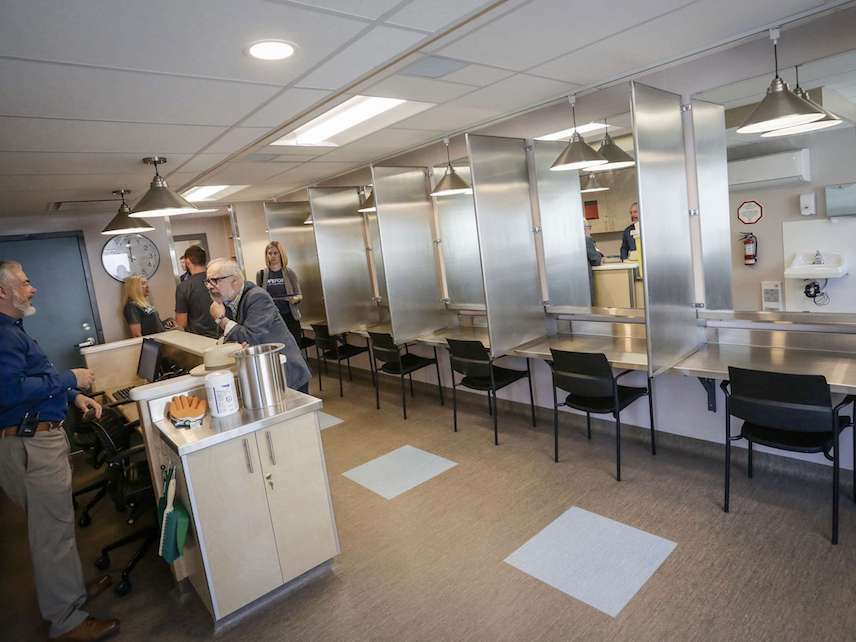Fentanyl Importation Reaches 'Shocking' Levels, Says Prosecutor
Maybe it's time to try a new approach?

Law enforcement in New York confiscated a record $30 million worth of illicit fentanyl, 195 pounds of it , in two combined seizures from four defendants over the past two months. The haul dwarfs the previous record of 97 pounds, set in June of this year by Drug Enforcement Administration agents in San Diego.
We should expect to see more of it. JFK Airport receives one million pieces of international mail every day. U.S. Customs officials at the facility recently told USA Today they've been able to intercept 40 percent of the fentanyl that comes through their doors, which means most of the fentanyl bound for America passes right on through JFK. The same is likely true at other U.S. ports of entry as well as the Mexican and Canadian borders.
"The sheer volume of fentanyl pouring into the city is shocking," New York City Prosecutor Bridget G. Brennan told NBC.
We can thank our own stubborn refusal to embrace harm reduction strategies, and, of course, China. According to a report from the U.S.-China Economic Security Review Commission, the PRC and Hong Kong "continue to divert chemicals from legitimate pharmaceutical uses and adulterate legitimate pharmaceuticals during production" due to the "fragmented and disorganized administrative system overseeing chemical production and exports."
With roughly 160,000 Chinese chemical facilities operating legally and illegally, it shouldn't surprise us that the second largest pharmaceutical market in the world and the largest global producer of chemical precursors has a major diversion problem. It also shouldn't surprise us that we don't have enough drug-sniffing dogs, Customs agents, or screening devices to catch all the fentanyl coming through the mail.
We do have one thing going for us, however, which is that most of the people who use fentanyl-tainted heroin just want the heroin. A 2015 study in the Harm Reduction Journal found that 73 percent of heroin users whose urine tested positive for fentanyl didn't know they'd taken any fentanyl at all. The sample size for this study was small, but it squares with what I've heard from non-medicinal opioid users in the U.S.: Most people take fentanyl inadvertently. They'd rather not take it at all, considering both how deadly it is and the fact that a person needs substantially more naloxone to reverse an overdose.
And before many Americans turned to heroin, many of them just wanted to use prescription pills, which is the safest option of the three. But we also made that incredibly difficult by cracking down on prescribing practices and requiring pharmaceutical companies to introduce tamper-proof formulations.
Every day of this horrendous epidemic has been a good day to ask why we don't just allow people to take heroin. The Swiss pursued this line of investigation at the height of their own HIV/AIDS epidemic, which was driven by injectable drugs. After the launch of the country's first heroin-assisted treatment clinic in 1994, Switzerland saw huge declines in drug-related deaths, drug-related crime, and AIDS-related deaths. Participants were given clean, accurately-dosed heroin three times a day under doctor's supervision. As a result, researchers saw "major disengagement from criminal activities," reductions in the use of heroin obtained outside the program, and "marked improvements in social functioning."
Heroin-assisted treatment isn't cheap: Countries with HAT programs spend roughly 15,000 Euros annually per patient, compared to roughly 2,000 Euros for medication-assisted treatment (which is also too scarce in the U.S.). But according to the European Monitoring Centre for Drugs and Drug Addiction, "If an analysis of cost utility takes into account all relevant parameters, especially related to criminal behaviour, [HAT] saves money."
Or, you know, we could keep doing what we're doing.


Show Comments (36)